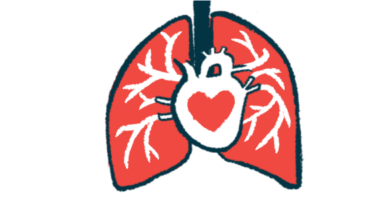FA cell therapy PPL-001 granted orphan drug status by FDA
Papillon treatment candidate aims to reverse disease progression in FA

The U.S. Food and Drug Administration (FDA) has granted orphan drug status to PPL-001, Papillon Therapeutics‘ cell therapy for Friedreich’s ataxia (FA).
According to Papillon, PPL-001 uses a “unique multi-systemic approach to treat patients” with FA. The cell-based therapy “offers the potential to modify and reverse disease progression,” the company said in a press release announcing the new FDA designation.
The regulatory agency awards orphan drug status to treatments that have the potential to improve medical care for rare diseases affecting fewer than 200,000 people in the U.S.
This status encourages pharmaceutical companies to develop treatments by giving them financial and regulatory advantages, including tax credits toward the cost of clinical trials. If approved, orphan drugs are granted seven years of market exclusivity without competition from generics or other formulations.
“We are pleased that the FDA has granted orphan drug designation to our program PPL-001,” said Carter Cliff, Papillon’s CEO. “This significant milestone underscores our commitment to developing groundbreaking therapies for patients with rare, debilitating diseases such as Friedreich’s ataxia.”
PPL-001 uses cells known as HSPCs, targets the cause of FA
In FA, defects in the FXN gene disrupt the production of frataxin, a protein essential for the functioning of mitochondria, the structures within cells that generate energy.
In nearly all FA cases, the genetic defect is the excessive repetition of three DNA building blocks — one guanine (G) and two adenines (AA) — within both copies of FXN. Each person typically inherits two copies of a gene, one from the biological mother and one from the biological father.
In FA, these so-called trinucleotide GAA repeat expansions disrupt frataxin’s production, leading to hallmark disease symptoms, including problems with coordination and balance (ataxia), muscle weakness, heart abnormalities, and neurological issues.
We believe this therapy has the potential to treat multiple symptoms and address the unmet treatment needs of patients and their families.
Hematopoietic stem and progenitor cells, known as HSPCs, are immature cells in the bone marrow and blood that can grow and develop into several types of mature cells, including blood and immune cells.
In 2017, Stephanie Cherqui, PhD, a professor of pediatrics and director of the Gene Therapy Initiative at the University of California, San Diego, demonstrated that a single infusion of HSPCs without FXN mutations restored muscle strength and motility in an FA mouse model.
About three years later, her team showed that the gene-editing technique CRISPR-Cas9 can remove the excess GAA repeats in patient cells. Recently, the researcher demonstrated that CRISPR-Cas9 could reverse several cellular features of FA in patient-derived nerve cells.
Treatment with PPL-001 involves removing HSPCs from a person with FA and correcting the FXN genetic defect with CRISPR-Cas9. The cells are then reinfused into the same patient. The goal of the therapy is to target multiple organ systems simultaneously — such as the brain, spinal cord, and heart — restore frataxin production, and modify or reverse disease progression.
“We believe this therapy has the potential to treat multiple symptoms and address the unmet treatment needs of patients and their families,” Cliff said.
Grants from the California Institute for Regenerative Medicine, the Friedreich’s Ataxia Research Alliance, and the National Institutes of Health have partially funded the development of PPL-001, according to Papillon.







